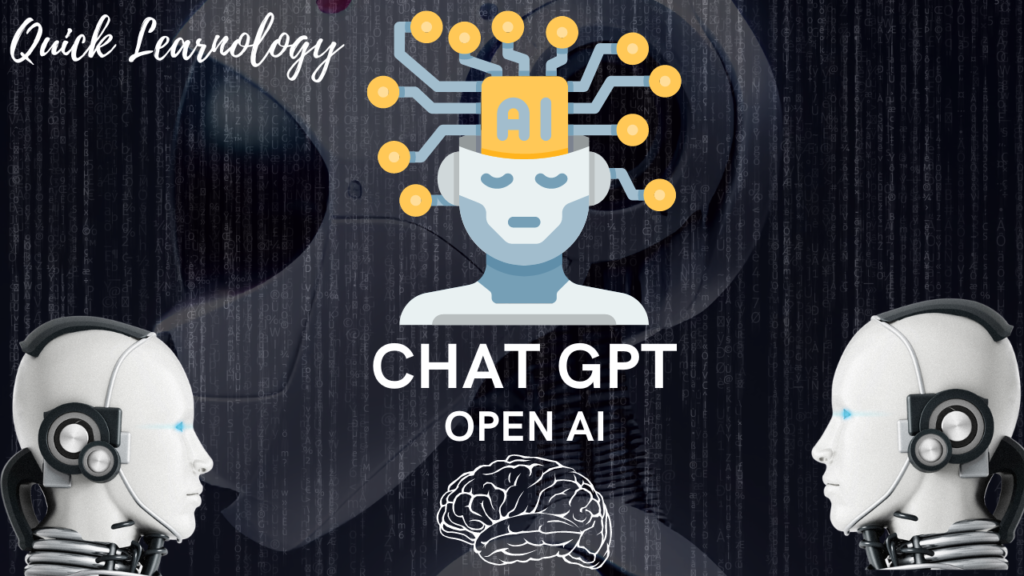Table of Contents
ToggleWhat is Chat GPT ?
- Chat GPT is a large language model developed by OpenAI.
- It is trained on a dataset of conversational text and can be fine-tuned for various natural language processing tasks, such as language understanding, text completion, and text generation.
- It is based on the GPT (Generative Pre-trained Transformer) architecture and can generate human-like text.
What is the use of Chat GPT ?
ChatGPT can be used for a variety of natural language processing tasks, such as:
-
- Text completion: ChatGPT can be used to generate text that completes a given prompt.
-
- Language understanding: ChatGPT can be fine-tuned to understand the intent behind a user’s input and respond accordingly.
-
- Text generation: ChatGPT can be used to generate text on a given topic, for tasks such as content creation, summarization, and language translation.
-
- Chatbot: ChatGPT can be fine-tuned for use in chatbot applications, to understand user inputs and generate appropriate responses.
-
- Language model for other NLP tasks: It can be fine-tuned for other NLP tasks such as question answering, sentiment analysis, and more.
In general, its main use is to generate human-like text, and it’s useful for applications such as writing assistance, chatbots, or other natural language generation tasks.
How Does the ChatGPT Tool Work?
ChatGPT is a pre-trained language model that uses a transformer architecture. It is trained on a large dataset of conversational text, which allows it to understand the context and intent behind a given input.
When given a prompt, ChatGPT uses its pre-trained weights to generate a response. It does this by predicting the next word in the sequence, given the previous words in the input. The model uses a technique called “masked language modeling,” where it is trained to predict a masked word, given the context of the surrounding words.
Once trained, the model can be fine-tuned for specific tasks by training it on a smaller dataset specific to that task. For example, if you wanted to use ChatGPT for a chatbot application, you would fine-tune it on a dataset of conversational text.
In essence, the model works by analyzing the context of the input and using that information, along with its pre-trained weights, to generate a response. The more it is fine-tuned to a specific task, the more accurate its responses will be.
Future Role of Chat GPT ?
The future role of ChatGPT is expected to include increased accuracy, improved scalability, multi-lingual support, improved speed, more specific use cases, improved interpretability, compatibility with other technologies, and improved security and privacy.
As OpenAI continues to update and improve the model, it will become increasingly useful for a wide range of applications and industries.
Chat GPT’s Benefits For Businesses
There are many potential benefits for businesses that use ChatGPT or similar language models. Here are a few examples:
- Customer service: ChatGPT can be integrated into customer service chatbots to help improve the quality and efficiency of responses to customer inquiries.
- Content generation: ChatGPT can be used to generate written content, such as product descriptions, blog posts, and articles, which can save time and resources for businesses.
- Personalization: ChatGPT can be used to personalize communications with customers, such as in email marketing campaigns or personalized product recommendations.
- Automation: ChatGPT can be used to automate repetitive tasks such as data entry, freeing up employees to focus on more complex and higher-value work.
It’s important to note that the success of these applications will depend on the quality of data sets used to train the model and how well the model is fine-tuned for the specific task.
Limitations of Chat GPT
There are a few limitations of ChatGPT and other language models like it:
-
Data bias: ChatGPT is trained on a large dataset of text from the internet, which may contain bias and misinformation. This can lead to the model producing biased or inaccurate responses, especially if it is not fine-tuned on a diverse and high-quality dataset.
-
Lack of context: ChatGPT is a machine learning model and it lacks the ability to understand context and intent as well as humans do. This can lead to the model producing irrelevant or nonsensical responses, especially when dealing with complex or open-ended questions.
-
Limited understanding of the real world: ChatGPT is trained on text data, so it may not have a good understanding of the real-world entities and concepts that are mentioned in the text. This can limit its ability to reason and make inferences based on the text.
-
Privacy and security: ChatGPT and similar models require large amounts of data to be trained, which could be sensitive and private. Businesses should be aware of the potential risks and take appropriate measures to protect this data and ensure compliance with relevant laws and regulations.
-
Limited to the data it was trained on: ChatGPT’s knowledge is limited to the data it was trained on, so it may not be able to answer questions about events or technologies that have emerged after the training data was collected.
Conclusion
ChatGPT is a important and protean language model developed by OpenAI that can be used for a wide range of natural language processing tasks.
It’s trained on a massive dataset of textbook from the internet, which enables it to induce mortal- suchlike textbook on a wide range of motifs.
It can be fine- tuned on a lower dataset to perform specific tasks, similar as answering questions, generating textbook in a particular style, or rephrasing textbook.
Businesses can take advantage of ChatGPT’s capabilities to ameliorate client service, happy generation, personalization, and robotization. still, it’s important to be apprehensive of the limitations of the model similar as data bias, lack of environment, limited understanding of the real world, sequestration and security, and limited to the data it was trained on.
Careful consideration of these limitations, and the quality and diversity of the data used to train and fine- tune the model, is pivotal to insure that ChatGPT can be used effectively in a business setting.


